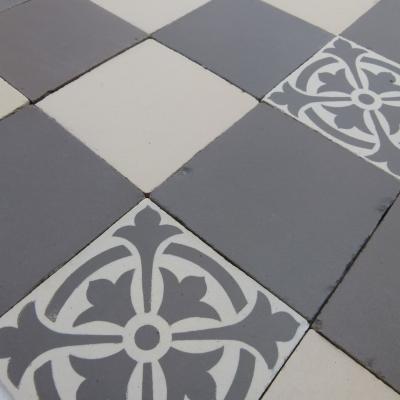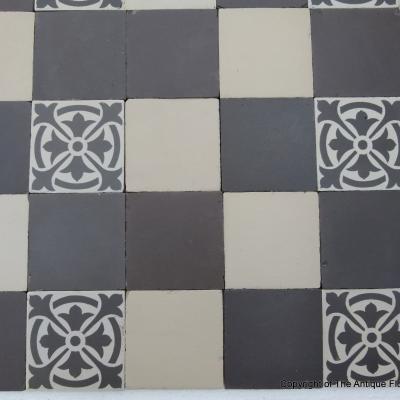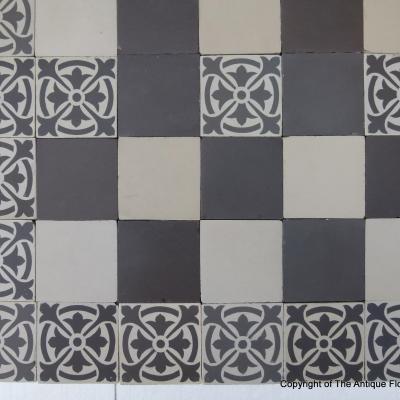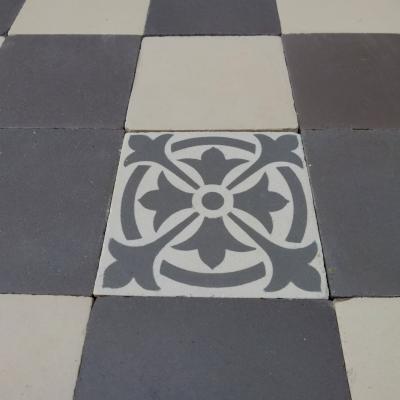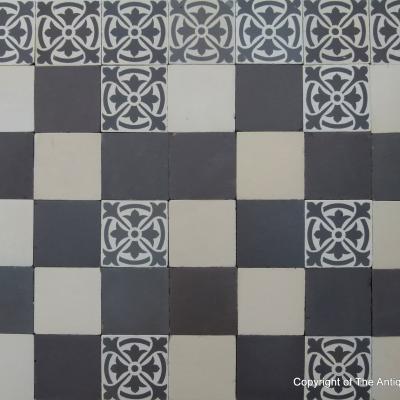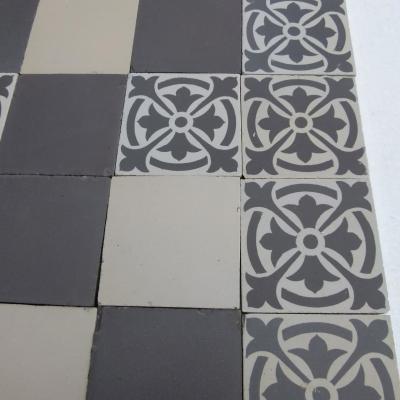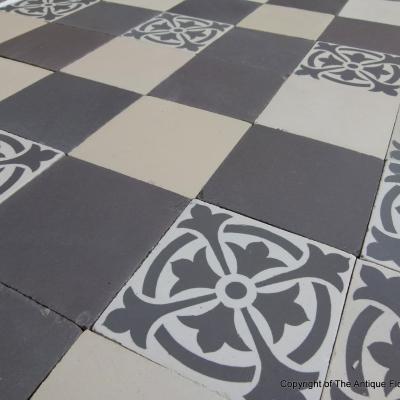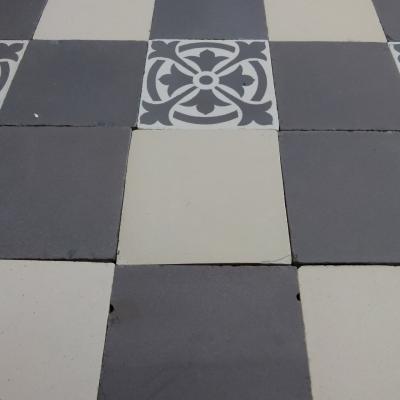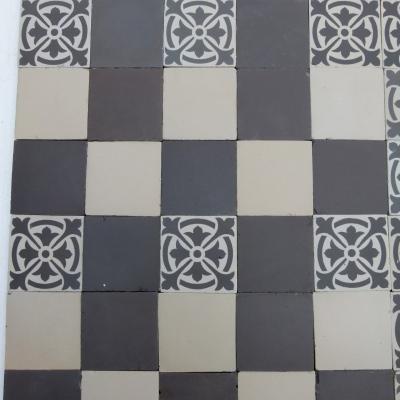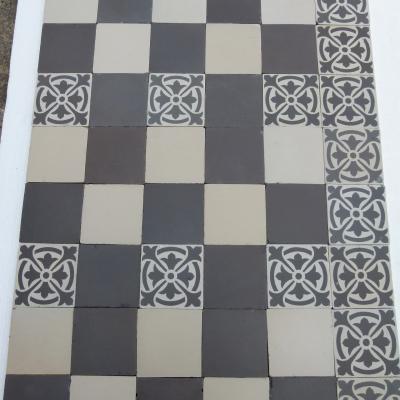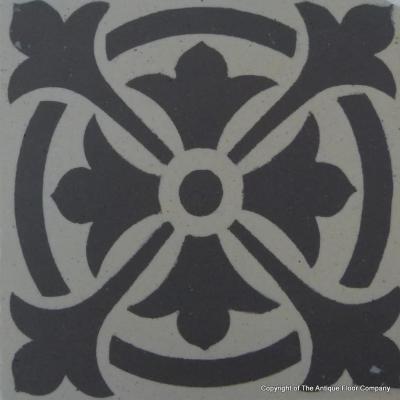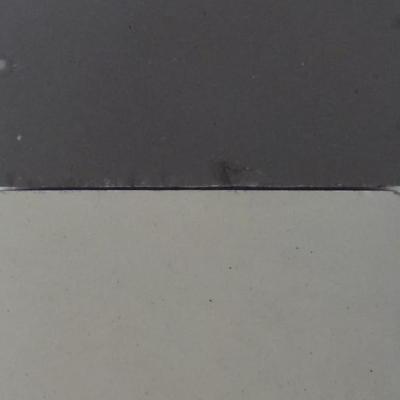14m2+ antique French damier ceramic floor of three field tiles
Reclaimed from a school renovation in the cathedral city of Rheims, Champagne-Ardenne and totalling 14m2 / 150 sq ft. a classical antique French damier comprising of three main field tiles; a grey motif on a white slip, a plain white tile and a plain mid-grey tile in the same colour as the motif. 13cm square and 15mm thick, the tiles are reverse stamped Leon de Smet & Co, Canteleau, Lille*. Having cleaned superbly they reveal a good quality highly fired ceramic, which can be laid inside or outside of the home and which will work superby with underfloor heating systems.
The high resolution photographs below show a randomly selected section of the floor which has a beautiful patina; small groutable edge nibbles and small chips on occasional tiles are present. Obviously the floor can be laid in several ways from a classical chessboard damier to using the motif tiles as both border and field tiles and the example photography is reflective of this. We would be happy to assist, without obligation, in looking at the best options of a lay for the your chosen area.
Tile quantities, give or take one or two:-
Motif - 215 - 3.63m2 / 39 sq ft
White - 210 - 3.54m2 / 38 sq ft
Grey - 400 - 6.8m2 / 73 sq ft
Plus a large number of free tile rejects for use as offcuts and halves.
*After the war of 1870-1871, France experienced a decade of considerable economic and industrial growth and a number of managers who had helped create the success of Boch Freres in Belgium departed to establish their own ceramic tile making companies. Amongst these were Paul Charnoz, who started tile production in Paray Le Monial, Burgundy. In addition to standard products they also carried out more prestigious commissions of great decorative finesse. Paul Simons, the first director of the Boch factory in Louvroil, left in 1868 to set up his own factory in Cateau, northern France, trading under the name S.A Manufactures de Carrelages Ceramiques Simons and which soon became as important as the Boch factory. Similarly, the great ceramic house of Sand & Cie were established in 1872 and a little later in 1882, Manufacture de Carrelages ceramiques de Canteleu-Lille Leon de Smet were established.
CE236



